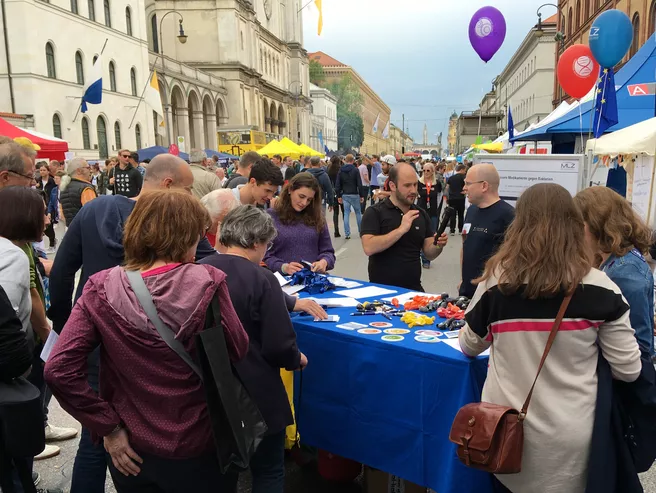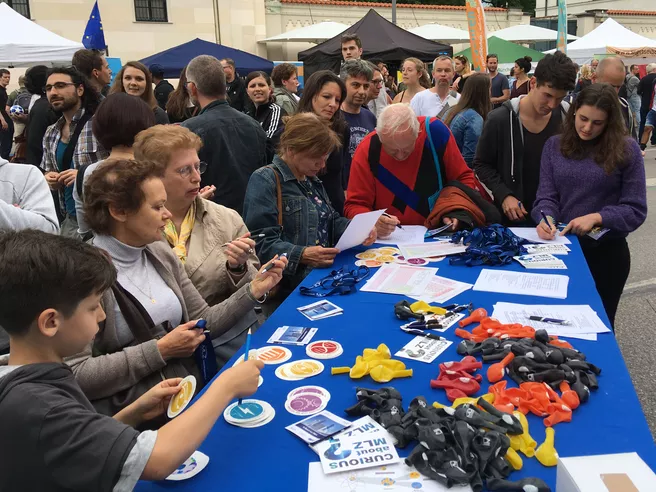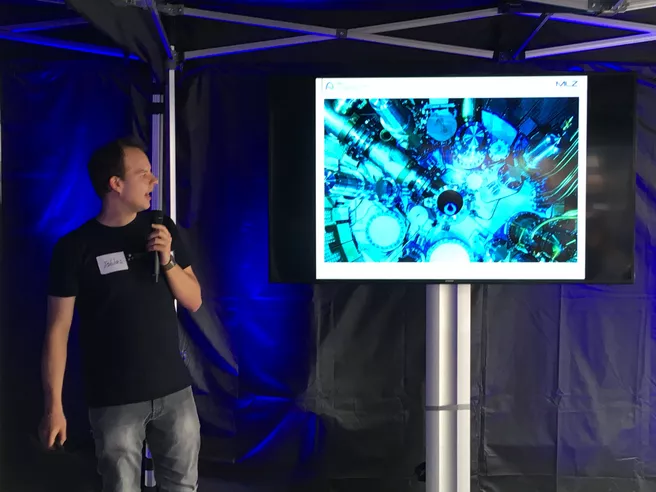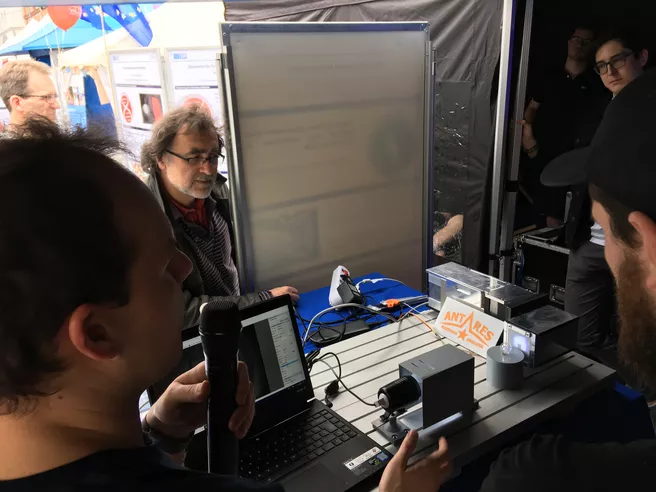This year‘s Streetlife Festival took place on the 25th and 26th of May in the Ludwig- und Leopoldstraße. The scholarship program, Junge Akademie, of the Technical University of Munich (TUM) participated for the second time in the event with StreetScience. The aim of StreetScience is to connect public and science: people could learn about a variety of scientific topics and exchange their questions and ideas with experts from the different fields. For the Heinz Maier-Leibnitz Zentrum (MLZ) it was the first time at StreetScience. We presented ourselves with interesting research examples, crossword puzzles for old and young as well as some exciting experiments.
At our stand, the visitors could learn more about the diverse application possibilities of neutrons like the research on antibiotics resistance, radiopharmaceuticals for cancer diagnosis and treatment, as well as more efficient power storage. Even the secrets of over 70 million years old dinosaur eggs can be elucidated with neutrons. Our younger visitors had a lot of fun with colourful balloons, stickers, and crossword puzzles.
In particular, the topic “Radioactivity in our everyday life” generated curiosity among the visitors. We packed our experimental case with common stuff that we use everyday, like fertilizer, but also an old tile with uranium glaze could be found. Additionally, we explored banana chips and nuts for our experiments. While some visitors were snacking with pleasure, others investigated the natural – and above all harmless – radioactivity of the popular foods with the help of a special measuring device (contamat). The visitors could measure the radioactivity in disintegration of atoms per second.
PhD student Tobias Neuwirth revealed some interesting details about the research reactor (FRM II) and exciting research examples during his talk. With the help of a model of the research instrument ANTARES, Tobias showed the visitors what he is currently working on at MLZ. The visitors experienced an optical tomography “live” at the model instrument. This method was used to analyse the skull and reconstruct the auditory canal of an extinct ancient relative of mammals.
Our aim was to communicate with people as well as to present the research reactor and, in particular, the experiments with neutrons to illustrate their value for our society (e.g. the improvement of batteries). Many visitors were amenable to the research at MLZ and had already registered for a guided tour of the neutron source.



